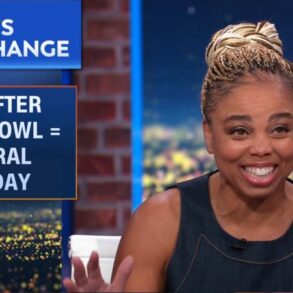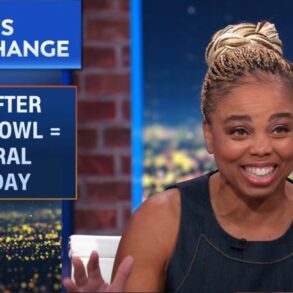PHOENIX — Before the first-ever game at the Major League Baseball level to include an automated challenge system for reviewing balls and strikes, Dodgers manager Dave Roberts had only one rule.
“I told Muncy not to challenge,” Roberts joked of veteran third baseman Max Muncy, a notoriously selective hitter with a critical eye at the plate. “He’s our biggest culprit of not agreeing with the strike zone. So I said, ‘Save your challenges.’”
In the Dodgers’ 12-4 spring training loss to the Chicago Cubs on Thursday at Camelback Ranch, Muncy obliged.
Unfortunately for him, his pitching counterpart didn’t.
In the bottom of the first inning, in an 0-and-1 count against Cubs right-hander Cody Poteet, Muncy took a called ball that was at the knees and over the inside corner of the plate.
“When that ball crossed,” Muncy said, “I thought it was a strike right away.”
So did Poteet. And for the first time, there was something he could do about it.
After watching home plate umpire Tony Randazzo rule the pitch a ball, Poteet quickly tapped his head to signal for a challenge, triggering an immediate review using MLB’s automated ball-strike system (or ABS, for short). On the scoreboard, a digital rendering of the pitch suddenly appeared, one based on data from the Hawk-Eye ball tracking system installed at the ballpark. And then, much like the ball tracer technology used to review points in professional tennis, an animation showed that Poteet’s pitch had indeed clipped the corner of the strike zone.
A 1-and-1 count was changed to 0-and-2. Muncy, who struck out looking on a similar throw three pitches later, was left to be the victim of a milestone moment in baseball rules history.
“I look out there and he’s tapping his head,” Muncy recounted after the game, “and I went, ‘Well, I’m going to be the first one.’ ”
For now, MLB’s use of ABS is still in an exploratory phase.
There are no immediate plans, or long-term timeline, to introduce the system in regular-season games yet. Questions remain about the precision of the technology, and how large a role it should have in games that actually count.
“I’m curious to see how it plays out,” Roberts said before Thursday’s Cactus League opener. “Haven’t made a decision on if I’m a fan or not.”
Still, after experimenting with the idea of ABS at various levels of the minor leagues over the last half-decade, MLB decided to give it a trial run in spring training this year, installing the Hawk-Eye technology at select Cactus and Grapefruit League ballparks — the Dodgers’ Camelback Ranch facility among them — in its most ambitious effort yet to make balls and strikes reviewable.
“It’s interesting,” Muncy said. “I don’t hate the idea of it. The technology, I think they’ll admit, is not entirely there yet. But it’s a cool idea and I like it. It’s just something that’s different.”
In a nutshell, here are the rules:
- Pitchers, catchers and hitters can trigger a review on any pitch by simply tapping their head after a ball/strike call is made. No one else, including even managers, can make a request for a challenge.
- Each team will get a minimum of two challenges per game, and will retain any challenges that are successfully overturned (for example, the Cubs still had two challenges remaining after Poteet’s ball to Muncy was changed to a strike on Thursday).
- Challenges must be signaled immediately after a pitch. If an umpire believes a pitcher, catcher or hitter delayed calling a challenge to look for a signal from the dugout, for example, their request will not be granted.
“It doesn’t slow the game down at all,” Muncy said. “It moves fast.”
In fact, during its experimentation in the minor leagues, MLB found that each challenge added only 17 seconds of game time. On Thursday, Muncy joked that the longest part of the process was Randazzo trying to get his stadium microphone to turn on in order to announce Poteet’s challenge to the crowd.
“I think it’s actually a pretty good system,” Roberts said after the game, coming away with a positive first impression. “Especially in a big spot, you want to get the call right.”
If (or more likely, when) the system is incorporated into regular-season games, it will likely draw more polarizing views in a sport that has relied on human umpires for balls and strikes for virtually its entire existence.
Not only will the reliance on ball-tracking technology mark a substantial change, but games would be infused with a new strategic dynamic — one that could go beyond just figuring out the most optimal times to challenge a call.
“Pitchers eventually may be able to take advantage of certain things, or pitches that are just typically not called [for strikes now],” veteran outfielder Michael Conforto theorized. “But I guess that’s why we’re doing it in spring. So I’m excited to see how it goes.”
Hitters, conversely, could also benefit, since the ABS strike zone wouldn’t vary game to game the way those of rotating human umpires do; especially in an era when catchers are taught to frame each pitch.
“When you get some really good catchers back there — like Will [Smith] and [Austin] Barnes, guys that can really stick a low pitch very well and make it look so much like a strike — you want to challenge it, but it’s a ball,” right-hander Bobby Miller, who experienced ABS during multiple stints in triple-A last year, said before Thursday’s game (when he took a comebacker off the head that landed him in concussion protocol).
“I’m not a huge fan of it; I always liked the umpire calling balls and strikes,” Miller added. “But a ball is a ball and a strike is a strike. So it is what it is.”
According to Smith, the Dodgers haven’t spent much time discussing the strategic elements of ABS in spring camp.
“I’m sure we’ll come up with a strategy of how we’re using it,” he said. “We’ll have the front office look at what makes sense in their mind, what makes sense in the hitter’s mind, what makes sense in the catcher’s mind. We’ll figure it out. But we’re not too worried about it right now.”
Muncy, meanwhile, was treated to some good-natured ribbing after Thursday’s ABS-assisted strikeout — coming out on the short end of a system that, in its MLB-level debut, his manager jokingly didn’t want him using.
“Of course it’s me that gets the first one after all those guys are joking about it. So fitting,” Muncy said with a laugh. “When I came back, Freddie [Freeman] was waiting for me, just laughing right in my face. Go figure.”
More to Read
This post was originally published on this site be sure to check out more of their content.






